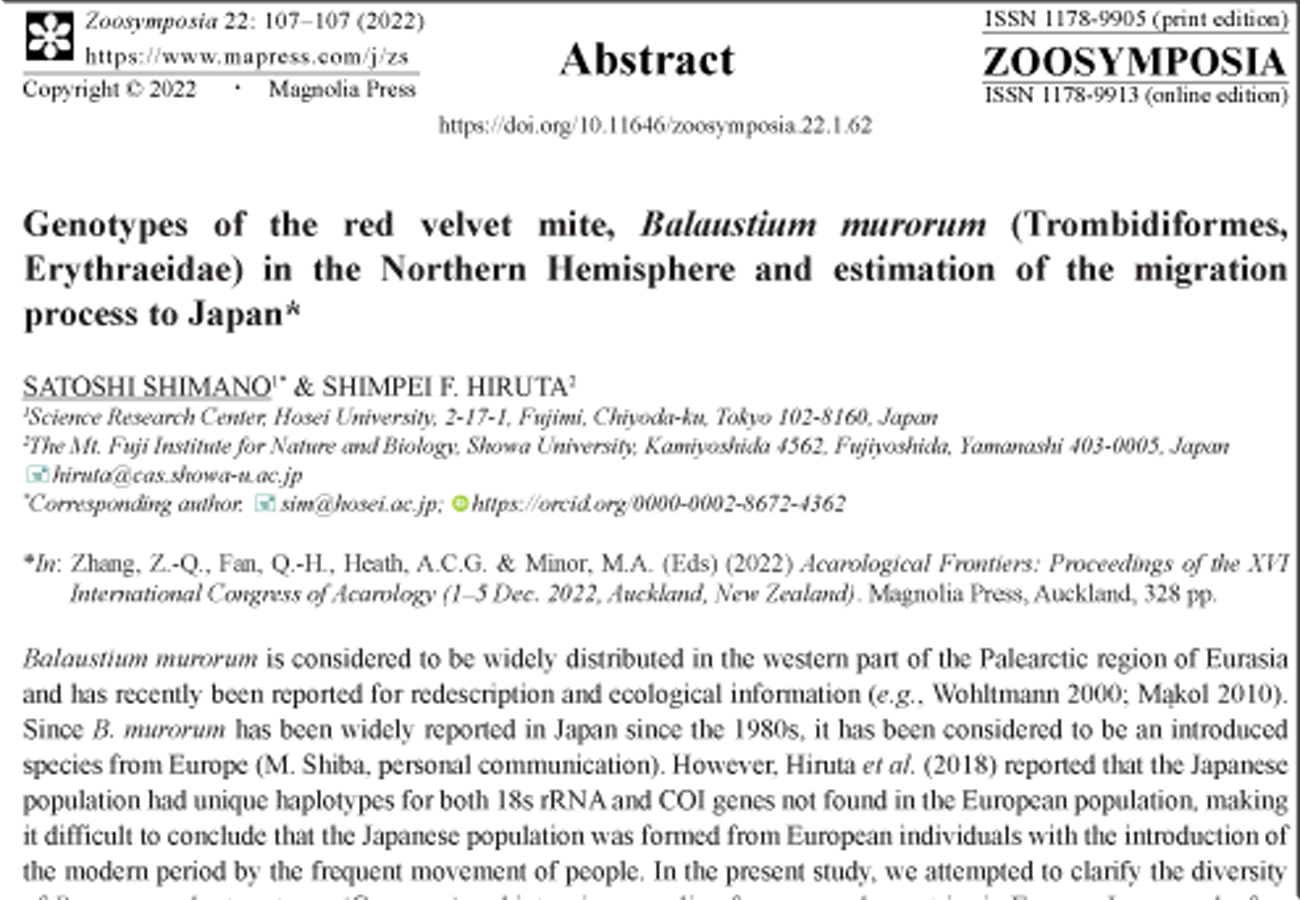Abstract
Balaustium murorum is considered to be widely distributed in the western part of the Palearctic region of Eurasia and has recently been reported for redescription and ecological information (e.g., Wohltmann 2000; Mąkol 2010). Since B. murorum has been widely reported in Japan since the 1980s, it has been considered to be an introduced species from Europe (M. Shiba, personal communication).
References
Mąkol, J. (2010) A redescription of Balaustium murorum (Hermann, 1804) (Acari: Prostigmata: Erythraeidae) with notes on related taxa. Annales Zoologici, 60 (3), 439–454. https://doi.org/10.3161/000345410X535424
Wohltmann, A. (2000) The evolution of life histories in Parasitengona (Acari: Prostigmata). Acarologia, 41 (1/2), 145–204.
Hiruta, S. F., Shimano, S. & Shiba, M. (2018) A preliminary molecular phylogeny shows Japanese and Austrian populations of the red mite Balaustium murorum (Acari: Trombidiformes: Erythraeidae) to be closely related. Experimental and Applied Acarology, 74 (3), 225–238. https://doi.org/10.1007/s10493-018-0228-0
Suyama, Y. & Matsuki, Y. (2015) MIG-seq: an effective PCR-based method for genome-wide single-nucleotide polymorphism genotyping using the next-generation sequencing platform. Scientific Reports, 5 (1), 1–12. https://doi.org/10.1038/srep16963


